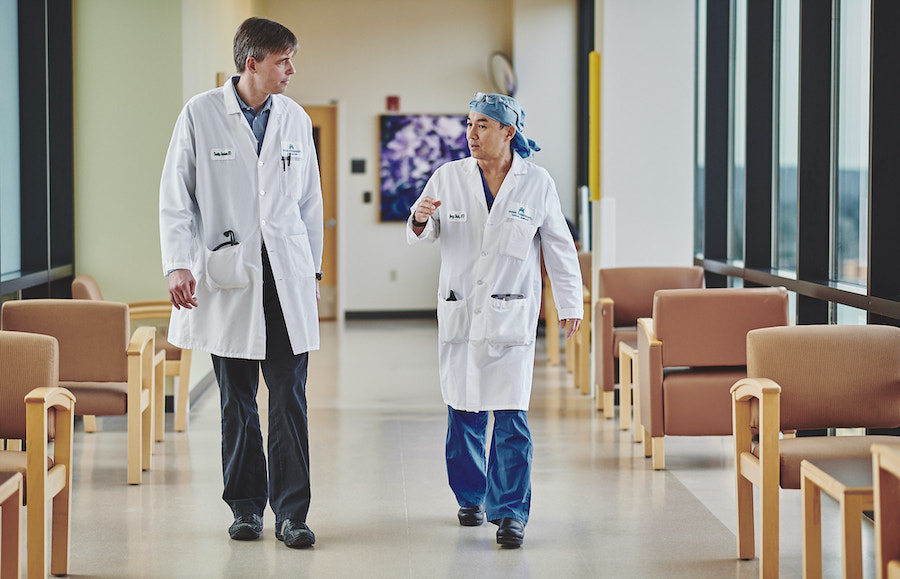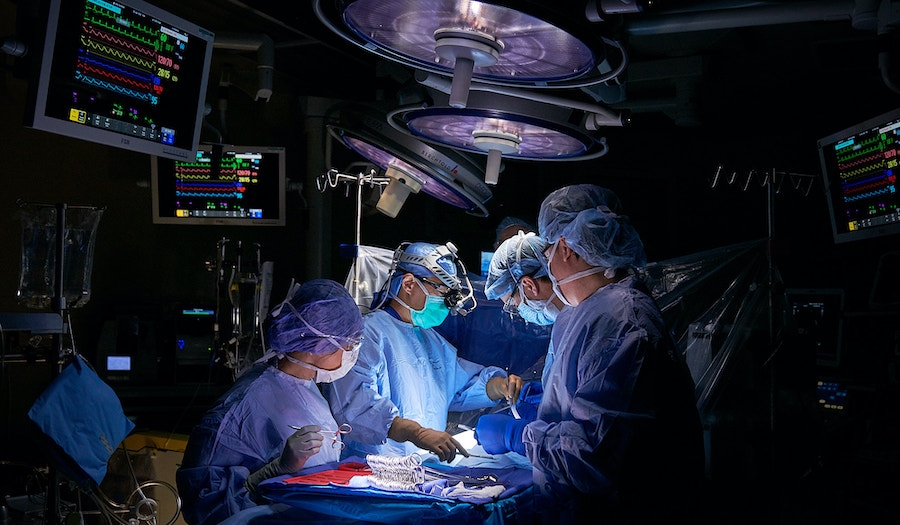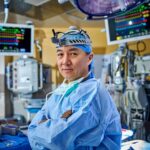Brand Story – Kaiser Permanente Sunnyside Medical Center’s collaborative-care model drives national recognition.
When the team at Kaiser Permanente Sunnyside Medical Center in Clackamas, Oregon, began revamping its cardiac care back in 2009, it had one goal: create a program worthy of treating its own family members. Since then, its cardiac care, cardiac surgery and pulmonary care have repeatedly ranked among the best in the country, solidifying Sunnyside Medical Center as a top-50 U.S. hospital.
Before 2009, doctors were referring patients with complex cardiac needs to one of the other high-quality hospitals nearby. A little over a decade later and, not only is Sunnyside Medical Center the premier heart program in Oregon, but a leader across the U.S. according to Healthgrades.
Healthgrades determines America’s 50 Best Hospitals Award recipients by mining Medicare patient data to evaluate thousands of U.S. hospitals, among which Sunnyside Medical Center placed in the top one percent. Additionally, it ranked as one of the 50 Best Hospitals for Cardiac Surgery for three consecutive years, and repeatedly receives awards for best cardiac care and pulmonary (lung) care.
A Team-Based Approach
Located in the Portland metro area, Sunnyside Medical Center’s rise to the top of the Healthgrades index happened thanks to a series of intentional people-centered decisions. According to its leaders, the most essential among them was the early adoption of a multidisciplinary, team-based approach.
A visit to Sunnyside Medical Center at 7:30 a.m. on any given morning showcases that model in action.
“Surgeons, internists, pharmacists, physical therapists, nutritionists, cardiologists … we all start the day together. Instead of everybody dancing to the beat of their own drum, here our model is based on rounding together so that our goals are aligned,” explains Dr. Timothy Jacobson, Chief of Cardiology, Kaiser Permanente Sunnyside Medical Center. “We’ve set up that infrastructure to drive better treatment.”
Each patient benefits from a tailored medical group of specialists with decades of combined experience, preventing fragmentation of care and improving outcomes. This level of daily collaboration ensures that all providers stay on the same page, especially cardiologists and surgeons.
 Chief of Cardiology Dr. Jacobson (left) with Dr. Shin (right) at Kaiser Permanente’s Northwest Center for Heart and Vascular Care in Oregon
Chief of Cardiology Dr. Jacobson (left) with Dr. Shin (right) at Kaiser Permanente’s Northwest Center for Heart and Vascular Care in Oregon
“Cardiologists and cardiac surgeons treat the same heart disease in different ways, and we need each other in order to give patients the best possible care,” explains Dr. Yong Shin, Chief of Cardiothoracic Surgery, Kaiser Permanente Sunnyside Medical Center. “The work we do can’t be done without teamwork between cardiologists and cardiac surgeons.”
Collaboration and Cooperation
In the case of opposing medical opinions, the opportunity to debate translates into better care for patients. Dr. Jacobson recalls a heartfelt discussion in which he and Dr. Shin proposed differing approaches to a surgery: “We both had very strongly held feelings on the case, and we were able to listen to one another and we decided to let our findings during surgery dictate our final decision instead of having a regimented idea going in.”
This level of cooperation takes resources and practice. In addition to daily meetings, the heart team has, for decades, held weekly forums allocated to discussing high-risk patients who exhibit a need for surgery. Regular communication like this has only recently become the industry standard…because it works.
Kaiser Permanente’s investment in systematic teamwork delivers results. Take, for example, Sunnyside Medical Center’s average length of stay after ventricular device placement. At nearly half the national average (12 instead of 20-plus days), its shorter hospital stays mean better outcomes by letting patients avoid the inherent risks that come with each day spent in the hospital. The program’s 1 percent readmission rate remains significantly below the national average of 4 to 5 percent.
“By listening to everyone we’re able to get patients home sooner and improve their recovery outcomes,” Dr. Jacobson adds. “If a physical therapist has an idea on rounds, we will listen and make an effort to put it into play, for example, getting a patient to walk earlier or taking tubes and catheters out sooner to avoid infection.
A Growing Demand for Care
Demand for cardiac care continues to grow, triggered by pandemic-related delays and the introduction of minimally invasive interventions that widen the pool of patients who qualify for treatment. The hospital’s catheter-based valve program has grown 10-20 percent year-over-year as the technology’s applications multiply—from helping close holes in the heart to replacing aortic valves. While perhaps tempting to focus on the catheter-based solutions enabling these procedures, Dr. Shin asserts that all roads lead back to collaboration.
“Minimally invasive surgery using robotics is a catchy term, but the majority of heart centers only do a small percentage robotically,” he clarifies. “We are heading toward minimally invasive surgeries that surgeons and cardiologists are doing together. As we start treating more complex patients, teamwork becomes ever more important, and that’s where we excel.”
 Yong Shin, M.D., chief of cardiovascular surgery at Kaiser Permanente’s Northwest Center for Heart and Vascular Care.
Yong Shin, M.D., chief of cardiovascular surgery at Kaiser Permanente’s Northwest Center for Heart and Vascular Care.
Dr. Jacobson agrees: “I think going forward, it will be increasingly important to have integrated teams. And that’s what sets us apart. It’s all about bringing people together to get the benefit of multiple perspectives. But not everyone wants to invest in that model. They’d rather just be the ones with the leading-edge procedures.”
Technology certainly plays a role at Kaiser Permanente: The remote heart monitoring tools behind its Virtual Cardiac Rehab Center allowed patients to continue potentially lifesaving services throughout the pandemic. However, according to this cardiac team, its medical excellence boils down to the hospital’s support of the people behind these procedures and technologies.
“We have really, really good outcomes here. And we’ve created a system and team that allows for these outcomes,” Dr. Shin concludes. “Everyone here cares. One day I could be Dr. Jacobson’s patient and he could be mine. I truly believe in what we have here. We are proud of the care we provide, and I want the entire community to benefit.”
Brand stories are paid content articles that allow Oregon Business advertisers to share news about their organizations and engage with readers on business and public policy issues. The stories are produced in house by the Oregon Business marketing department. For more information, contact associate publisher Courtney Kutzman.




